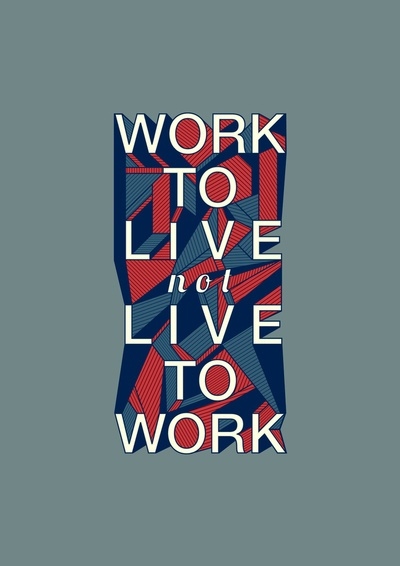How to Explain the Millennial Generation? Understand the Context
By
2014, Vol. 6 No. 03 | pg. 1/3 | »
IN THIS ARTICLE
KEYWORDS
As a child, I was sheltered and not allowed to watch the Power Rangers or other such violent and crude television series. My parents divorced when I was two and my childhood was constantly in limbo between two seperate households. I sleep next to my phone and computer, and I do not trust politicians. The morning of September 11th, 2001, I was in school with my classmates. I expect to graduate college $40,000 in student debt and afterward, to move back home to live with my parents. To myself and the other eighty million Americans born between 1982 and 2000, these experiences are the norm. We are the “perma-children,” the 9/11 generation – or the “screw you generation” – but we much prefer being referred to as the Millennial Generation. The term "generation" artificially groups people together with little more in common than the years they were born. So why are generations studied and considered important? According to sociologist Dr. Karl Mannheim, a generation’s “practical importance becomes clear as soon as one tries to obtain a more exact understanding of the accelerated pace of social change [in a given period]” (1927, p. 286-287). Mannheim’s Theory of Generations suggests that generations change swiftly in response to major events. This differs from Strauss-Howe's Generational Theory, which favors a cyclical pattern of archetypes. While Mannheim focuses on the influence of history and Strauss-Howe on the influence of past generations, both have a cause-effect basis. The two theories, when used simultaneously, help explain how a 'generation' emerges and becomes defined by the previous generations and historical context. In an analysis of the Millennial Generation through these models, I conclude that the technology-obsessed “perma-children” known as Millennials are the result of a normal ebb and flow of change created by history and society. “The young people of this generation do not live to work – but rather work to live. A job merely provides the income to do that they want to do” (McCrindle, 2007, p. 4) Strauss-Howe Generational TheoryStrauss-Howe Generational Theory characterizes historical generations through cyclical changes called “turnings.” Howe later explains this phraseology by stating that “every generation turns the corner and to some extent compensates for the excesses and mistakes of the midlife generation that is in charge when they come of age” (Galland, 2009, p. 38). According to Strauss-Howe Generational Theory, earlier generations have the greatest influence over new generations. The generational archetypes, or “turnings,” occur in a recognizable pattern that can be categorized as heros, artists, prophets, and nomads. After the “nomad” generation, the turning then returns to “hero,” ultimately producing a cycle of archetypes.The “hero” generation, according to Howe, describes the current Millennials (Galland, 2009). As described by Howe, the “heroes” respond to the previous generation’s skeptical nature and to new crises: “institutional life is destroyed and rebuilt in response to a perceived threat to the nation’s survival” and “cultural expressions redirect towards community purpose” (Howe & Strauss, 1996, p. 105). The “crisis” for the Millennial Generation was 9/11 and the subsequent economic recession. Although millennials are not entirely of age, their influence in the United States and on the world is dawning. Politicians, businesses, and educators are already having trouble understanding and effectively reaching out to millennials; later, this essay delves further into the how and why this is happening. 
"Work to Live not Live to Work." Credit: Society6.com The subsequent “artist” generation is described as a post-crisis era when this generation observes the hero’s loss of individualism and responds appropriately. Society “cuts down social and political complexity in favor of public consensus, aggressive institutions, and an ethic of personal sacrifice” (Howe & Strauss, 1991, p. 98). In other words, the individual is weak while institutions are strong. Historically, this archetype gave rise to the American suburbs and corporate jobs. The last “artist” generation emerged between 1925 and 1942 which, according to Howe and Strauss. The individual was voiceless enough during this time that they became known as the Silent Generation. It should be noted that this archetype marks the now incomplete generation, starting in 2001. The “prophet” archetype represents the middle ground between the “artist” and the “nomad,” when the new generation’s individualism begins to grow stronger and institutions again become weaker. In the words of Howe and Strauss, this turning is described as the point in which “society reach[es] the high tide of public progress, people suddenly tire of social discipline and want to recapture a sense of personal authenticity…. young activist[s] look at the previous generation as an era of cultural and spiritual poverty” (Howe & Strauss, 1991, p. 101). This generation does not want to live by the same strict standards that the previous generation preferred. In American history, the “prophet” generations often search for “authentic self-expression” and have strong morals (Galland, 2009). The latest generation of “prophets” can be found in the Baby Boom generation (born 1943-1960), who were known for rock and roll and political unrest in Vietnam War protests, the women’s rights movement, and the counterculture movement. The ensuing generation, the “nomad,” is the opposite of the “artist” generation when individualism is the strongest and large institutions are attacked. Howe, in his interview with Galland, says nomads “learn they can’t trust basic institutions to look out for their best interest” (Galland, 2009). Pragmatic realists often characterize this as an archetype in American history. The most recent “nomads” are Generation X (born 1961 to 1981) who are still defining their legacy. This generation has a need “to combat corruption, dictatorships, abuse, AIDS… [it is] a generation in search of human dignity and individual freedom, the need for stability, love, tolerance, and human rights for all” (Henseler, 2012, pp. 23). Strauss-Howe’s Generation Theory can be reduced to the idea that each new generation responds to the previous generation. This theory has been criticized for not explaining the role of historical events. The difficulty with this theory is that there are often events that create unpredictable reactions, even though it is often challenging to identify the primary event. The reaction is usually what influences the next generation. While Strauss-Howe’s cyclical theory does not take into account major historical events, Mannheim’s Theory of Generations suggests “major historical events are what change a society” (Mannheim, 1927, p. 290). Mannheim’s Theory of GenerationsIn Dr. Karl Mannheim’s Theory of Generations, the absence of a cycle creates a less structured theory that compliments the Strauss-Howe Generational Theory to create a full explanation of the Millennial Generation. Mannheim also acknowledges that generations influence and are influenced by those who preceeded them, but he simultaneously believes that social change occurs at a much slower pace. Mannheim’s theory can be summarized by the idea that “people resemble their times more than they resemble their parents” (McCrindle, 2007). Mannheim theorizes that major historical events change society quickly in a much more direct, linear way. Examples of major historical events include the bombing of Pearl Harbor, the assassination of John F. Kennedy, and more recently, 9/11: each event created a “turning” in the given generations. The primary difference between the two popular generation theories is that one theorizes past generations have the greatest influence on their successor while the other relies primarily on major events. Though different in structure, the basis for each theory is the same: a generation does not grow independently from outside influence and both theories use cause and effect to illustrate the emergence of generational traits because both public and private spheres influence a generation.Continued on Next Page » Suggested Reading from Inquiries Journal
Inquiries Journal provides undergraduate and graduate students around the world a platform for the wide dissemination of academic work over a range of core disciplines. Representing the work of students from hundreds of institutions around the globe, Inquiries Journal's large database of academic articles is completely free. Learn more | Blog | Submit Latest in Sociology |


















